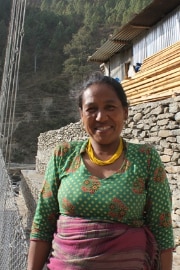On 25 April and 12 May 2015 the two powerful earthquakes which struck Nepal resulted in a catastrophic loss of lives and damage to essential infrastructures. The livelihoods of over 2.28 million households were affected. 79 trail bridges out of the 6,500 known in the country collapsed.
In Nepal, these trail bridges are fundamental for rural populations, especially those in rugged mountainous terrain. Due to the lack of motorable roads, people there continue to rely on trails and tracks to access markets, administrative offices, health facilities, schools, or perform household chores.




